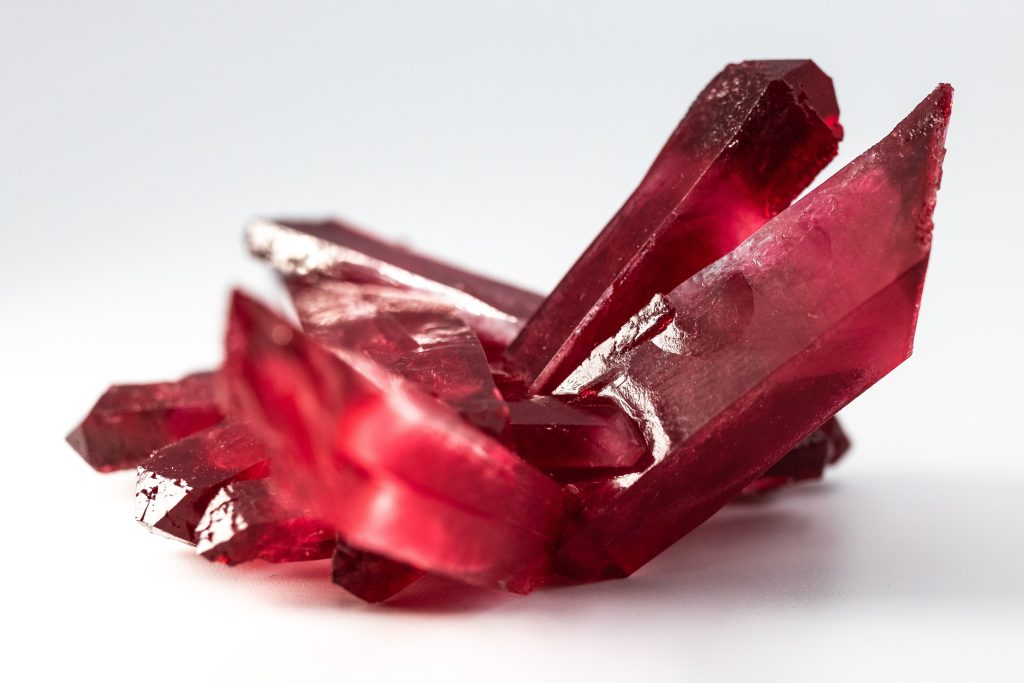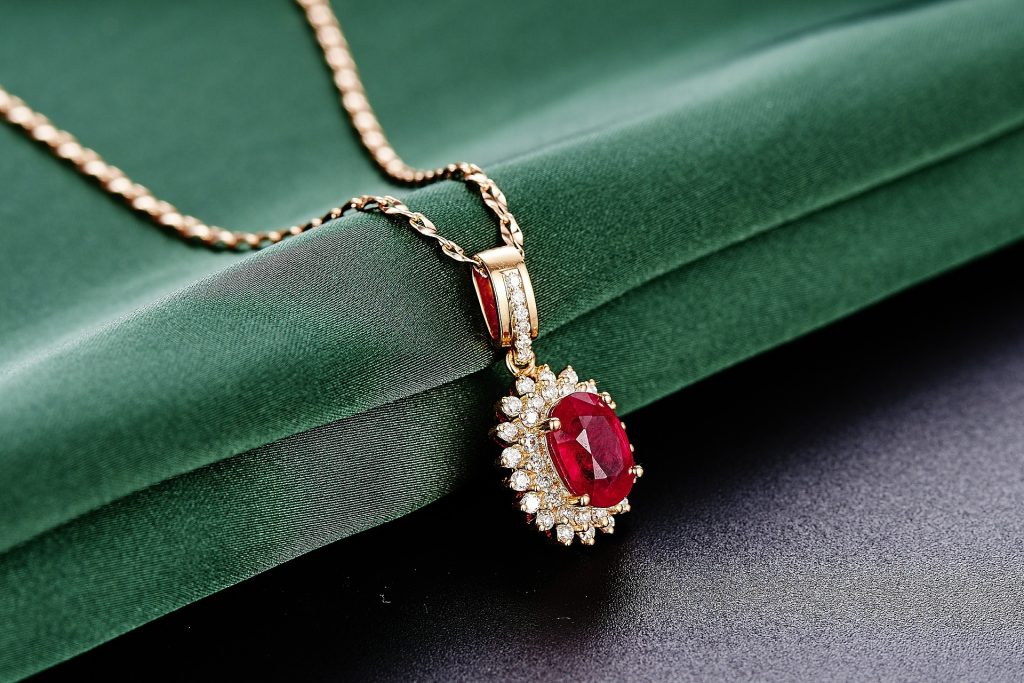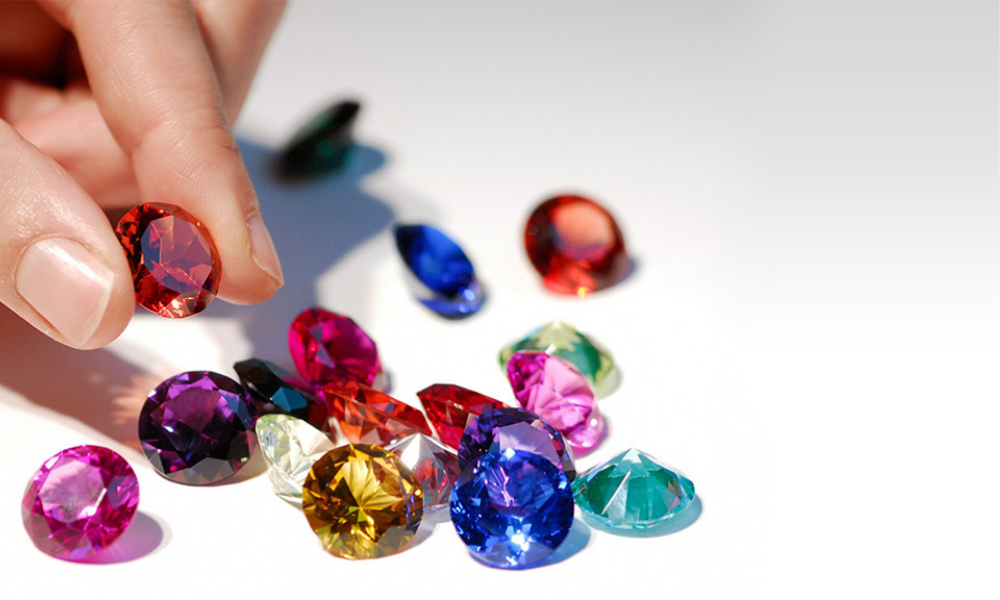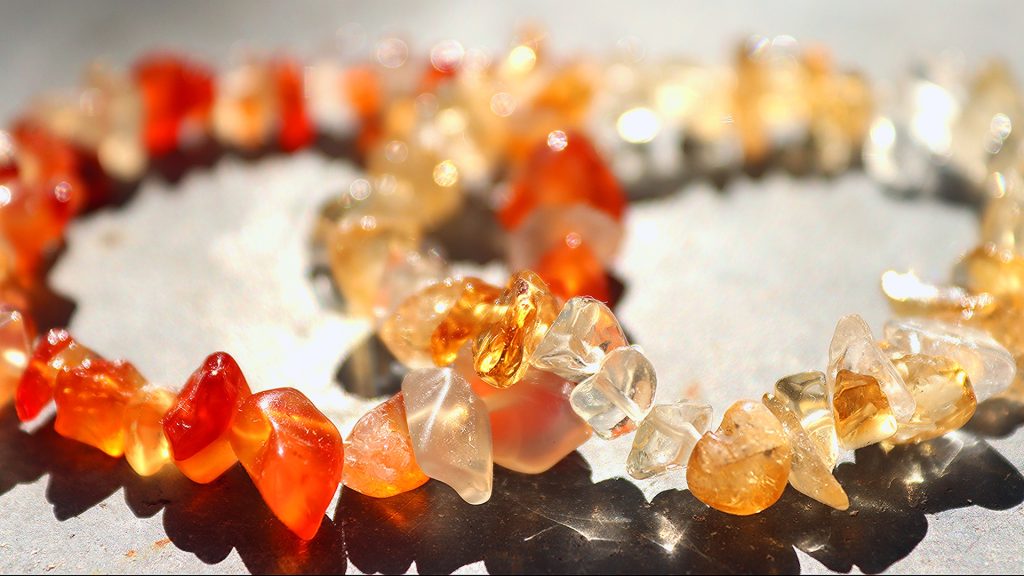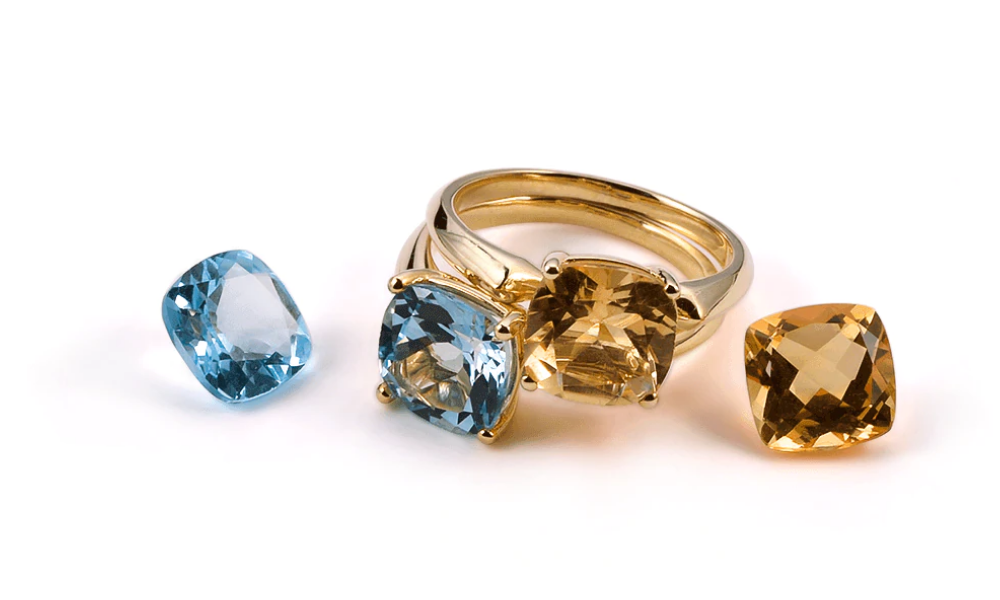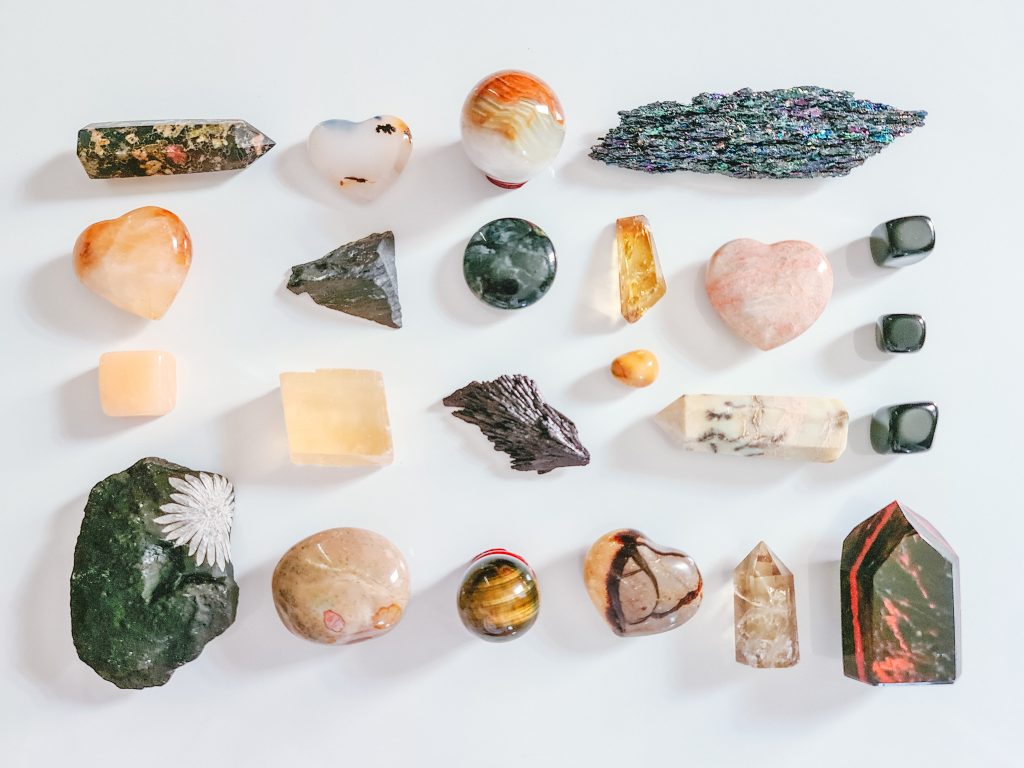The perfectness factor is a huge draw for the ruby gemstone, and it contributes greatly to the beauty of your jewelry. However, buying gemstones can be tricky, and you might have to deal with unscrupulous sellers. To be on the safe side, learn how to identify a real ruby gemstone. Here are some easy steps. You can use a magnifying glass, a jeweler’s loupe, or a standard microscope to check the stone. If you don’t have a high-powered magnifier, you can ask a friend or a gem lab for help. You can also visit a jeweler to get an opinion.

How to Identify Real Ruby Gemstones?
Step 1: Verify the Ruby’s Hardness
Natural rubies, which rank a solid 9 on the Mohs scale of Hardness, are extremely resistant to scratches, as was already mentioned. Real rubies are only outlasted in terms of durability by diamond and moissanite jewels, the former of which rates a 10 on the Mohs scale and the latter a 9.25. As a result, only a diamond or something with a hardness of at least 9 can scratch genuine rubies. On the Mohls Scale of Hardness, this is true of all jewels. For instance, because glass, a typical component of fake rubies, only rates 5.5 on the hardness scale, it can only damage stones that rate 5.0 or lower.
Step 2: Verify the Color of the Ruby
Color is another important factor to look for. Real rubies have a deep red tone, while fakes are light or dull. Moreover, the deeper the red tone, the more expensive it is. But, there are plenty of other factors that can help you determine the quality of your ruby. Don’t settle for a ruby without considering these factors. When buying a ruby gemstone, be sure to ask for a GIA certification and check out the stone’s girdle.
Color Richness Test:
One of the most important things to consider first is the hue of the ruby stone. A genuine ruby gemstone has a rich, dark color. A ruby-red hue that is so intense it appears dazzling, in contrast to the imitation rubies that frequently have a pale, lifeless appearance.
Flashlight Red
While you can use the “stoplight red” as a guide, don’t anticipate discovering an actual ruby that is so vivid. If so, the “natural ruby” is probably a fake. However, compared to a fake, lifeless stone, an actual ruby gemstone is more like a dazzling traffic light.
Bright Red:
A garnet is more likely to be a gem than a genuine ruby if the tint is darker. Real rubies are frequently substituted with garnets.
Step 3: Feel the Ruby’s Weight
Real rubies are frequently denser than fake ones. You must weigh the allegedly fake stone and contrast the weight with that of a ruby of comparable size in nature to determine whether it is real. A false stone will weigh less than a genuine ruby.
Step 4: A Real Ruby is Expensive
The uniqueness of the gemstone is the best sign that you have a genuine ruby gem. Since lab-created synthetic rubies make up the majority of the market, genuine rubies will always be more difficult to find and more expensive. If a ruby gem is priced too little, there’s a significant probability it’s a fake or of very poor quality.
A natural ruby typically costs a lot of money. An artificial ruby, on the other hand, can be up to 90% less expensive and is typically 20% less expensive than a real ruby.
It is difficult to find a natural ruby that is greater in size. However, genuine gemstones of bigger carat sizes are very hard to find and quite expensive. A very high likelihood exists that a ruby is artificial if it is fairly large.
Despite the high price, a real ruby is still a valuable gemstone, and it can cost quite a bit. Therefore, if the price is extremely low, you’re probably buying a fake. Size is also a huge sign of authenticity. The biggest rubies are often expensive and hard to find, and smaller ones will likely be cultured. A real ruby will be large, but you can’t be too sure of the size. Ruby without a high price tag is likely to be a fake.
Step 5: Evaluate the Clarity of the Ruby
Purchase a ten-power (10x) jeweler’s loupe online and examine your “ruby” closely. Through a procedure known as spectroscopy, you may spot minute imperfections on a natural ruby’s surface under a microscope. Typically, these faults are imperceptible to the naked eye.
They are “inclusions,” these errors. A genuine ruby will always include faults, sometimes in the shape of a black spot, a line, or inclusions from other minerals since natural ruby develops as a mineral deep in the soil.
Furthermore, the clarity of a real ruby should be constant throughout; if it is not, your stone is probably not a real ruby.
Step 6: Examine the cut in relation to its size.
Real rubies larger than 12 carats are typically carved into elaborate forms like a pear or cushion. As a result, if your ruby is spherical and larger than two carats, it can be a fake.
Step 7: Natural Rubies Come with a Certificate.
Verify the certification if you’re seeking natural rubies. Every purchase of a ruby will come with an authenticity certificate from a recognized vendor. The 4 Cs of each ruby should be mentioned in this document: carat weight, color, clarity, and cut. The certification will also specify if a ruby has been treated or not. This is significant because a naturally occurring ruby stone is worth more than one that has been treated.
The only reliable method to verify a natural ruby’s authenticity is this last method. The gemstone in question is probably a fake ruby if the jeweler doesn’t provide this proof. Never be afraid to inquire about a prospective diamond purchase. A trustworthy jeweler will be pleased to respond to your questions. Before making your purchase, speak with a gemologist or other professional if you’re still undecided.
Additional Tests to Check your Ruby
The Ruby Scratch Test
The ruby scratch test operates in this manner. It is a phony ruby gemstone if you can scratch the stone’s surface with your nails or any other pointed object that is not a diamond or moissanite. A genuine ruby gemstone cannot be scratched by any other gemstone with a harder Mohs hardness rating.
Scratching a ruby gemstone can reveal its authenticity or falsehood. A real ruby cannot be scratched easily, but a fake will leave a red stain. To test if a ruby is fake, rub it on a hard surface. If the ruby leaves a red stain, it is a fake. If you are unsure, try soaking it in lemon juice to make it cloudy. If a fake ruby leaves a color streak on the porcelain, it is probably a glass composite.
You are checking to see if your ruby leaves a color streak using this technique. Use the aforementioned ruby to scratch a piece of glass or another hard, smooth surface. It is obvious that you have a false ruby in your hands if a streak of red color remains on the hard surface.
A genuine ruby gem won’t ever lose color in such a manner. The one drawback to this method is that if the ruby doesn’t leave any traces of color, you cannot be certain that it is genuine. But if it does, then you may be positive that it is a false ruby.
The Glass Test
Glass is a frequent component of synthetic rubies. Compare your ruby to glass that has a similar hue to see if it is genuine. No real ruby will ever have a color or tint that matches that of a piece of glass.
A natural ruby will always appear clear. However, a fake ruby may have some minor imperfections that can be hard to detect. The most effective way to spot a fake ruby is to compare it to a real ruby. Whether the stone is a real ruby or a fake ruby, the two will never match. Therefore, the only way to identify a fake ruby is to examine it under a magnifying glass.
How can I Test Ruby on my Own?
RUB TESTING:
Use the aforementioned ruby to scratch a piece of glass or another hard, smooth surface. It is obvious that you have a false ruby in your hands if a streak of red color remains on the hard surface. A genuine ruby gem won’t ever lose color in such a manner.
How do I Properly Clean my Uncut Ruby at Home?
Warm water and dish soap or a mild detergent should be added to a bowl. Rub the ruby gently with a soft-bristled toothbrush after letting it soak in the solution for 15 to 20 minutes. After cleaning, dry the gem with a gentle, lint-free towel.
Purify a Ruby Stone
Put your Manik necklace, a mixture of honey, raw cow milk, Ganga Jal, and Tulsi leaves, in a clean metal dish, preferably silver or copper. Before removing the stone and cleaning it with clean water, give it 30 minutes to soak in the basin. This is a way to purify your ruby.
Conclusion
Another way to determine whether ruby is real or fake is by its color and shine. A genuine ruby will be deep red and will be glimmering and sparkling. Compared to a fake ruby, a real ruby will have a deep, vibrant red hue that is reminiscent of a stoplight. A fake ruby, on the other hand, is dull and lackluster.
Natural rubies are usually unheated, and the red color is due to the chromium in the stone. The higher the chromium content, the more vibrant the color. Because of this, it is crucial to distinguish between a fake and a real ruby before you buy. These are the best ways to distinguish a fake from a real ruby. If you have an expensive ruby, you’ll want to ensure it is a genuine ruby.

